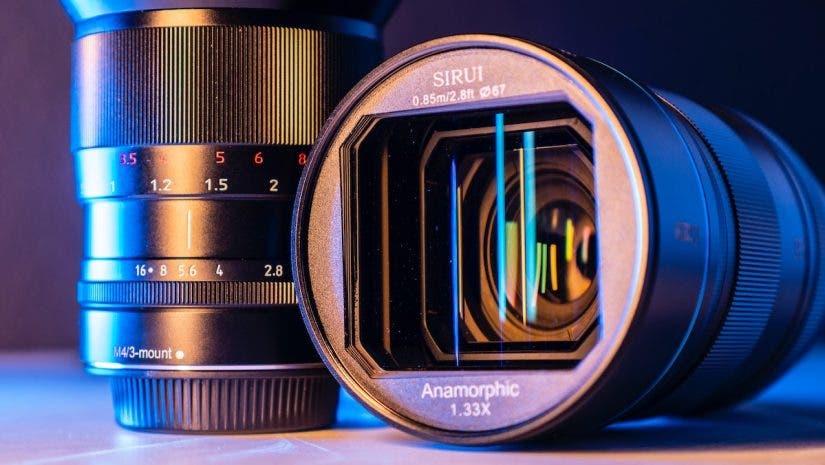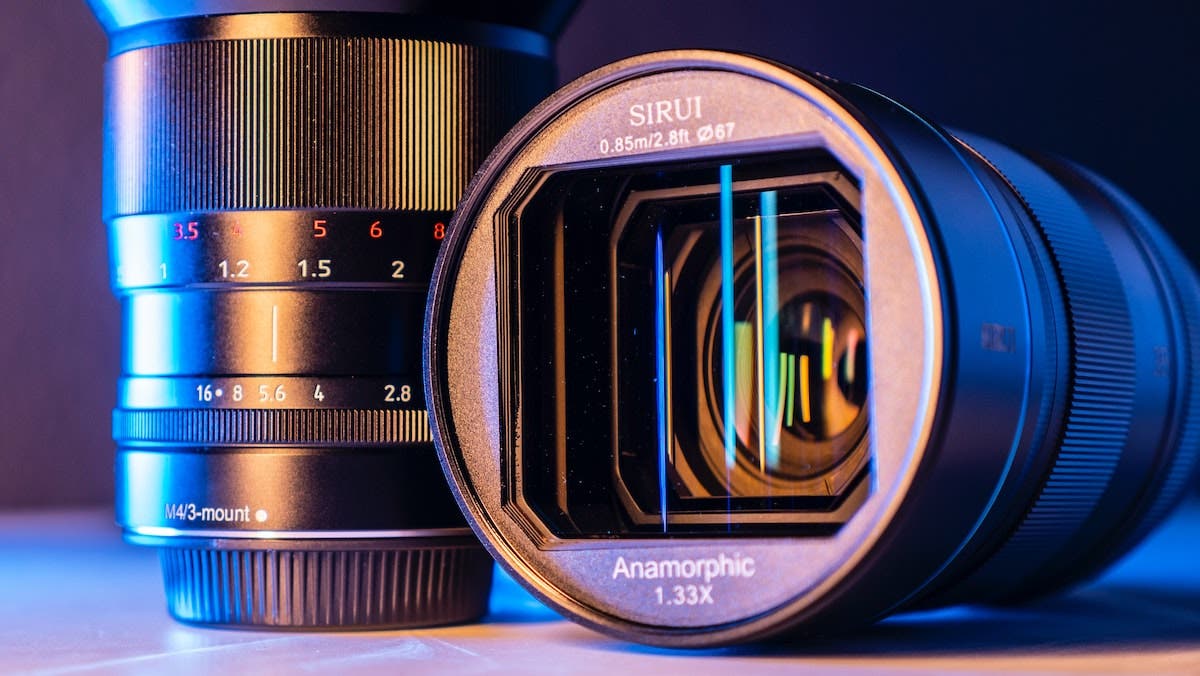The realm of cinematography gear can appear overwhelming, particularly when encountering the term “anamorphic” which can puzzle even seasoned photographers and filmmakers. Don’t worry if this is your first time hearing of these lenses. Put simply, an anamorphic lens is a specialized instrument that can produce striking visuals and elevate your filmmaking skills.
In this article, discover why including an anamorphic lens in your equipment is a good idea. Learn how these lenses can produce a distinctive appearance and allow you to capture cinematic visuals without incurring exorbitant expenses associated with renting, buying, or hiring costly cine equipment.
What is an Anamorphic Lens?
Since their introduction, anamorphic lenses have aimed to provide more aspect ratios to fit within a standard film frame. Various lenses have been made over the years and, more recently, they have found their way to mirrorless cameras.
Now as a large selection of prime or zoom lenses, cinematographers and photographers can pick from various focal lengths. This includes ultra-wide-angle (25mm-32mm), wide-angle (35mm-50mm), standard (75mm-85mm), and telephoto (100mm-180mm). Each lens brand has its own characteristics and provides a different look, so it’s important to see the results before choosing one.
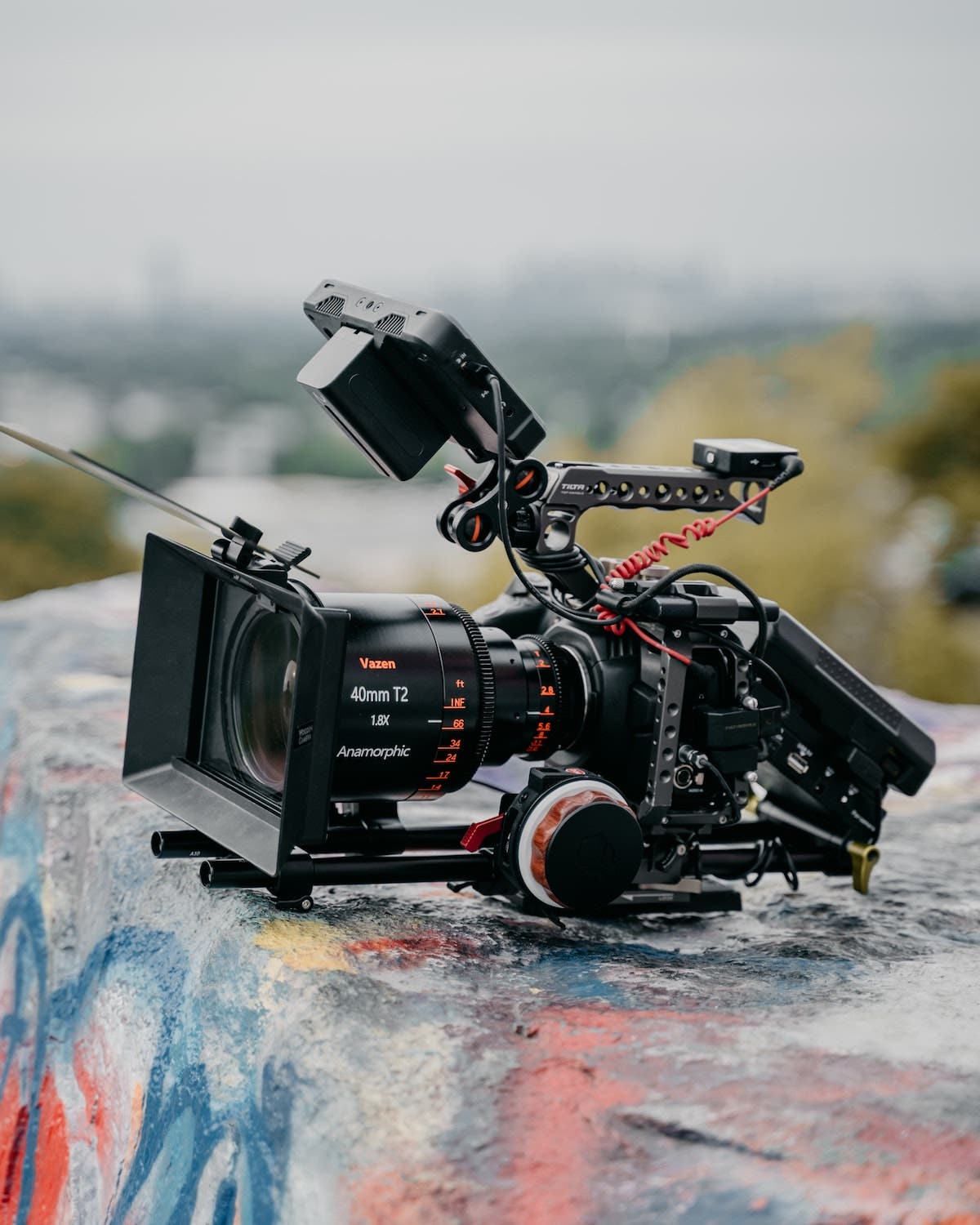
The biggest reason why creatives see value in these lenses is due to their special effects. Users can obtain unique in-camera optical effects such as flares, shallow depth of field with consistent bokeh, and pleasing distortion for wider-angle lenses.
Another reason these lenses are popular is the different look compared to traditional lenses. This is all thanks to the construction of optical elements. Optics are typically made of glass or crystal within the lens, compressing the image and expanding horizontally. Essentially, it stretches the picture onto the sensor as the optics are more cylindrical or oval-shaped than the traditional circular aperture. The result is a 2.39:1 widescreen aspect ratio that doesn’t crop the image, unlike letterboxing, a 16:9 ratio (letterboxing adds a black bar to the top and bottom of the image).
What Does an Anamorphic Photo Look Like?
As mentioned, anamorphic lenses are optically different from spherical lenses. Therefore, users will find three main benefits to the visual and photographic look over traditional lenses. These include better bokeh, a shallower depth of field, and vibrant lens flares.
Smooth circular bokeh or “bokeh balls,” is something many photographers and filmmakers strive to capture. When achieving the same look with an anamorphic lens, you’ll notice a significant difference. Instead of round bokeh balls, elongated bokeh is the common goal for creatives adorning an anamorphic lens. This effect is even more pronounced when shooting wider apertures on faster prime lenses (f/1.4 or f/2).
The wider aspect ratio and maximum aperture of an anamorphic lens can result in a more isolated subject with greater blurriness in the background. This effect can be particularly useful when photographing people. It allows the subject to stand out from the background.
Finally, the characteristic lens flares produced by anamorphic lenses are a unique and often desirable effect. The cylindrical or oval-shaped glass elements in anamorphic lenses can produce horizontal lens flares, which can be especially striking when shooting into the sun or other bright light sources.
How to Use an Anamorphic Lens
You need to choose the right subject matter to maximize your anamorphic lens’s potential. These lenses work best with landscapes, cityscapes, and other wide-angle scenes where the light is directional.
In addition to the scenarios above, anamorphic lenses are also ideal for shooting portraits and other close-up subjects. This specialty glass’s shallow depth of field can even provide a dramatic and cinematic look far beyond a spherical lens. It’s all thanks to the elongated bokeh, which adds a dreamy and ethereal quality to the scene.
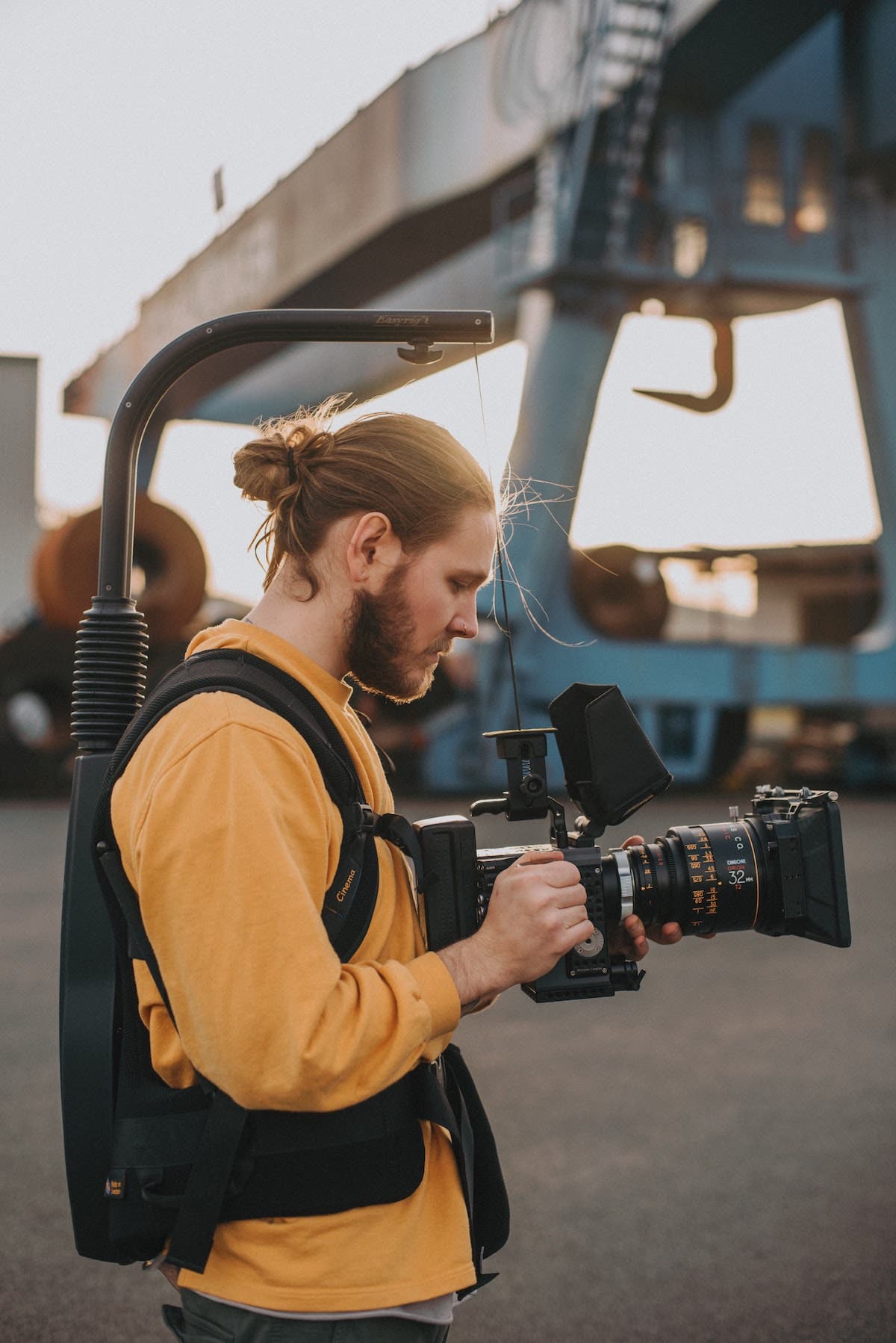
In all these scenarios, ensure to pay close attention to the light when using one of these lenses. This is because, during the golden hour or similar times when the light is warm, flare introduces itself, adding to a unique cinematic look.
Finally, you should treat these lenses like any other. Take time to compose your shot. Use a tripod or gimbal to stabilize, then capture the scene. Understand the technical aspects of using an anamorphic lens, including properly focusing, changing the aperture, and adjusting the aspect ratio. With practice, these controls can become second nature. This will allow you to focus on the creative aspects of using an anamorphic lens.
Anamorphic vs Regular
When it comes to choosing the right lens for your production, the aesthetic you want to achieve is the primary consideration. While there are some notable differences between photographic and cine lenses — such as the focus breathing — anamorphic lenses offer a unique aspect ratio that can change the look of the shot entirely.
Anamorphic lenses are specialized lenses that optically compress the horizontal axis of the image. This allows for a wider field of view and a cinematic aspect ratio of 2.40:1 or 2.35:1. The resulting image has a unique and highly desirable anamorphic “look.” This gives the image a more immersive feel and adds a touch of visual interest that cannot be achieved with spherical lenses.

On the other hand, a spherical lens produces a more natural look with a wider depth of field. These lenses are simple and cheaper than anamorphic lenses, making them more accessible to filmmakers and photographers.
Ultimately, the choice between anamorphic and spherical lenses depends on the desired artistic effect, the shoot’s technical requirements, and the available budget.
Recommended Anamorphic Lenses
For Canon
Venus Laowa Nanomorph 27mm T2.8 1.5x S35 Anamorphic Lens for PL/EF
As an innovative anamorphic lens for Super35 sensors, the Venus Laowa Nanomorph 27mm T2.8 Cine Lens features a constant 1.5x squeeze ratio, creating a cinematic widescreen image. In addition to oval bokeh and horizontal flares, it also has a shallower depth of field, giving the footage or photograph a unique artistic look. With its lightweight, small size, and portability, it can easily be mounted on handheld cameras, gimbals, sliders, and drones. Plus, the mount is also PL and EF compatible.
For Fujifilm
Sirui 24mm f/2.8 1.33x Anamorphic Lens for Fujifilm X
In the Sirui anamorphic lens lineup, this 24mm f/2.8 1.33x lens for Fujifilm X mount is affordable for any X-T or X-H system. With a 1.33x wider horizontal field of view, it creates a cinematic 2.4:1 aspect ratio making it ideal for landscapes and indoors. Visually you’ll see a greater depth of field that emphasizes the subject under any lighting conditions. You can adjust the aperture smoothly (step-less) from f/2.8 to f/16.
For Nikon
Venus Laowa Nanomorph 35mm T2.4 1.5x S35 Anamorphic Lens for Nikon Z
Unlike the 27mm equivalent Nanomorph lenses, the 35mm Venus Laowa Nanomorph Cine T2.4 Lens offers a closer angle of view to our human eye, making it a valuable asset for portraiture. Consisting of a constant 1.5x squeeze ratio, made for Super 35 sensors, users can focus 60cm away from subjects. Additionally, photographers and filmmakers will find this lens a welcome match for cine housings and a host of rigs thanks to its usable 0.8 / 32 Pitch.
For Sony
Sirui 50mm f/1.8 1.33x Anamorphic Lens for Sony E
This popular anamorphic lens by Sirui allows for cinematic widescreen shots with a distinctive horizontal flare, dynamic 2.4:1 videos (after de-squeeze), and an oval bokeh effect. Cinematographers and photographers will find the lens enlarges the horizontal field of view up to 33% compared to traditional spherical 50mm APS-C lenses. The result after enlargement is field-of-view (FOV) equivalent to an APS-C 37.5mm lens, making it a perfect fit for FX and Alpha series cameras.
Conclusion
In summary, an anamorphic lens is worth exploring if you wish to create a unique look. With more cameras offering a hybrid shooting solution of stills and video, photographers and cinematographers will find a middle-ground when pairing this lens with their camera bodies.
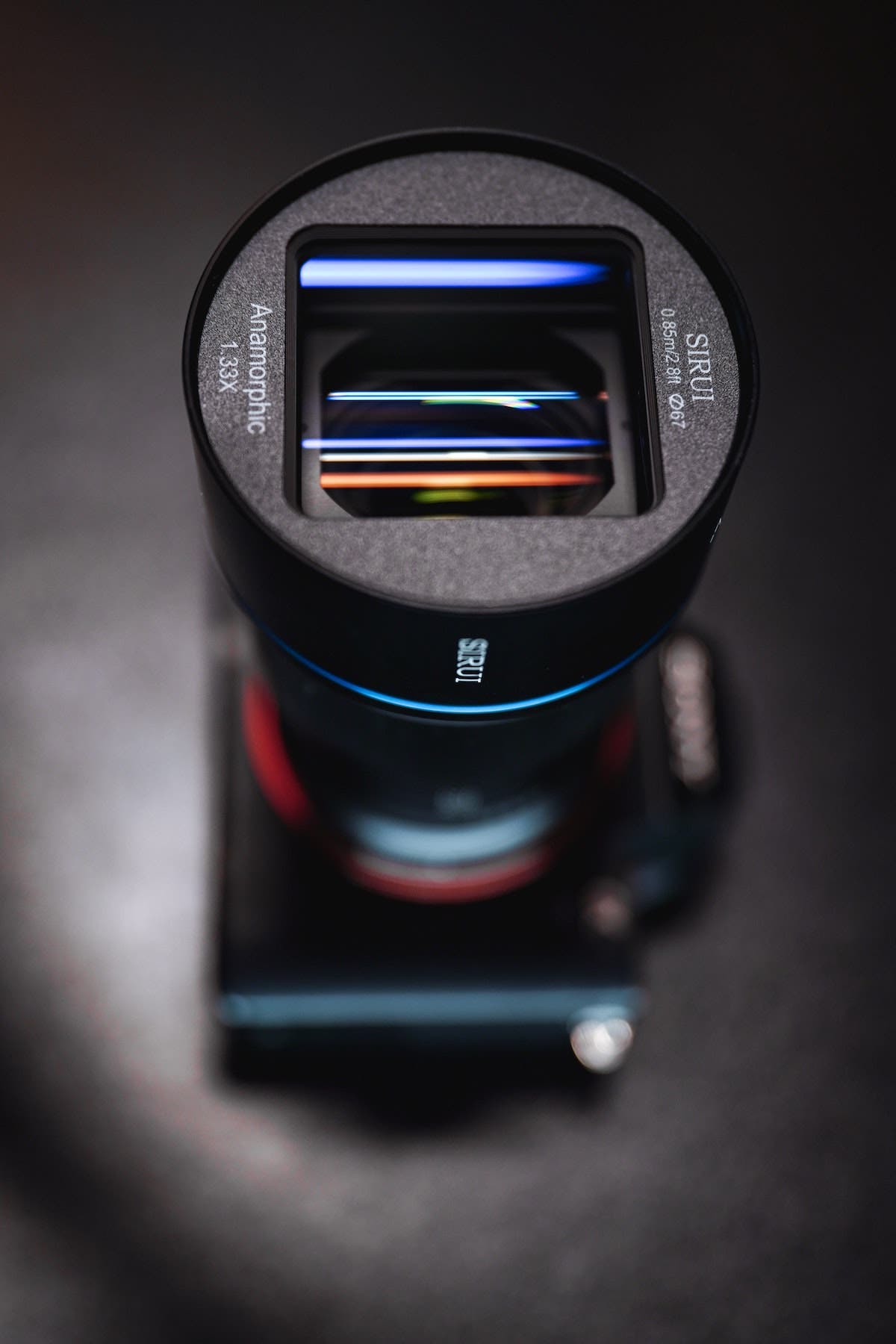
The visual impact of anamorphic lenses is particularly suited for storytelling. It allows you to create an immersive cinematic experience for your audience. Anamorphic lenses can also help create a distinct visual signature that sets your work apart. However, it is worth noting that using anamorphic lenses can also require some technical know-how and post-processing, such as de-squeezing the footage to get the correct aspect ratio. If you’re willing to put in the extra effort, anamorphic lenses can take your photography and videography to the next level.
